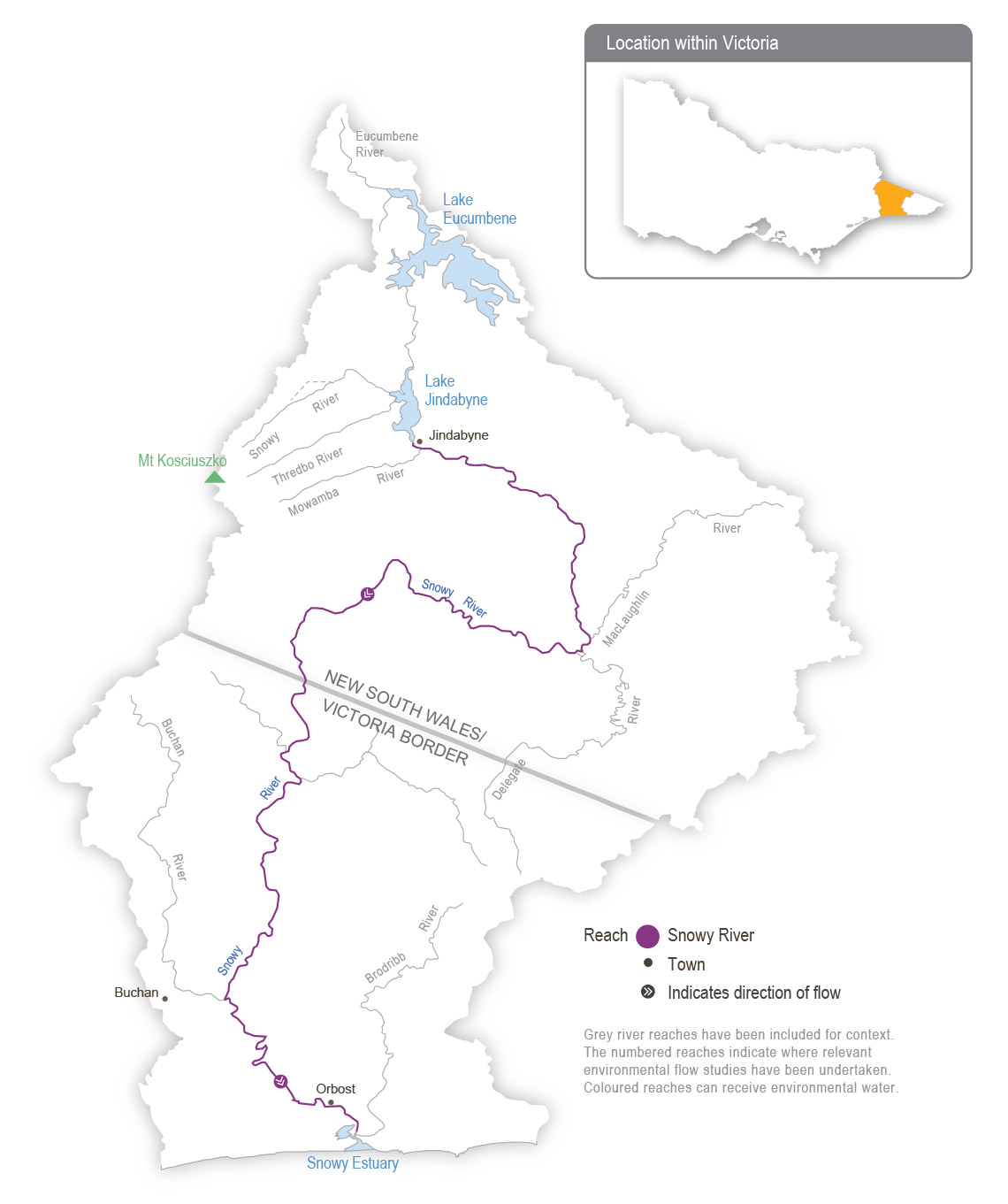There are four major dams and multiple diversion weirs in the upper Snowy River catchment that capture and divert water to the Murrumbidgee River and Murray River valleys. The hydrological effects of the Snowy Mountains Scheme are substantial, but they are partly alleviated by the contribution of flows from tributaries (such as the Delegate River in NSW and the Buchan and Brodribb rivers in Victoria).
The construction and operation of the Snowy Mountains Hydro-electric Scheme previously diverted 99 percent of the Snowy River’s mean annual natural flow at Jindabyne. The loss of flow changed the structure and function of the river, reduced the opening of the Snowy River entrance to Bass Strait and resulted in a decline in environmental values.
The Victorian, NSW and Commonwealth governments agreed to recover some of the water and, in 2002, delivered the first environmental flow to the Snowy River below Jindabyne Dam to help restore the damage done by decades of limited flow. The Victorian share of water for the environment available for use in the Snowy system is held in the Victorian Murray, Goulburn and Loddon systems. The NSW share of water for the environment available for use in the Snowy system is held in the NSW Murray and Murrumbidgee systems. Collectively, the water is made available for environmental flows in the Snowy River via a substitution method, whereby water for the environment allocated in Victoria and NSW replaces water earmarked for transfer from the Snowy to Victoria and NSW to support irrigation demands. The NSW Department of Planning and Environment
plans environmental flows in the Snowy River in consultation with the Snowy Advisory Committee. The committee includes representatives of the Aboriginal community, the local community, the Victorian Government, the NSW Government and environmental experts. The committee brings together local knowledge and expert advice to help inform the management and delivery of water for environmental outcomes.
The water year in the Snowy system runs from 1 May to 30 April, and the Snowy Advisory Committee plans the daily flow regime. Water for the environment is delivered daily to the Snowy River below Jindabyne Dam. The annual allocation of water for the environment varies based on water availability, rainfall and inflows. Environmental releases aim to deliver an average of 212,000 ML per year, the equivalent of 21 percent of the average annual natural flows before the construction of the Jindabyne Dam.




